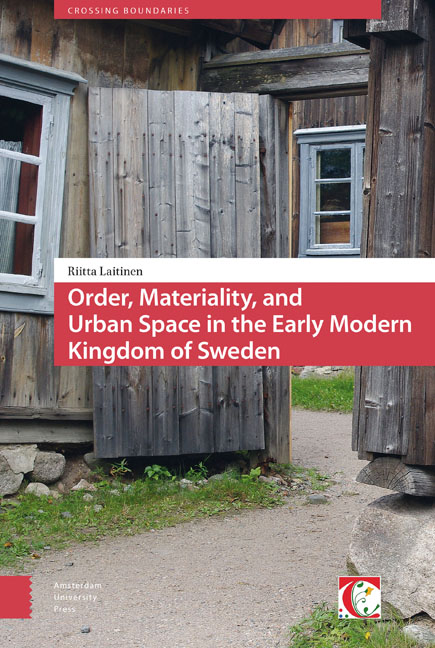Book contents
1 - Ordering Everyday Mobility
Published online by Cambridge University Press: 12 December 2020
Summary
Marking and Crossing Boundaries
However much people moved in and out of the town, the movement, in principle, always halted at the town gates. Turku never had a proper town wall, but the town was surrounded by a toll fence from 1623 onwards, after the passing of the 1622 Town Toll Ordinance. On every road leading into town, gates and gatehouses marked the entrance to the town, and by the 1640s the town gates had long been part of everyday life in Turku. The town toll boundary was not unlike the town walls that many European towns had, even if the toll fence was a far cry from any sturdy medieval town wall. This chapter opens with an examination of what the Turku town toll boundary was like materially and how it operated as one of the defining boundaries of the town as a delimited urban space.
Restricting incoming traffic into towns was of course very common both in medieval and early modern Europe. Most European towns had walls and gates, which fulfilled multiple functions. The gates were used as a site to welcome people: ceremonies for important visitors, for example, were arranged at the gates. On the other hand, beggars, sick and other unwanted persons were stopped at the gates, their entrance hindered. At night, the gates were closed to prevent anyone from coming in, and during daytime various excise taxes were collected on many of the goods and wares brought into towns. The wall usually denoted the extent of the urban administration and its judicial reach, and delimited various economic activities and opportunities.
The history and architectural theory of town walls and gates interested Renaissance architects and humanist scholars. Daniel Jutte writes that in scholarly thought, the ideal early modern city required a perfect wall. These scholarly views were followed by various rulers, and during the early modern era some medieval town walls were replaced, by new militarily more advanced walls with more gates than previously. In the Swedish kingdom, the change in the nature of the urban boundaries in the early modern era was more fundamental. The only towns in the kingdom with medieval town walls were Stockholm, Vyborg (Viborg, Viipuri) and Kalmar.
- Type
- Chapter
- Information
- Publisher: Amsterdam University PressPrint publication year: 2017



